NIL
Attorney in House vs. NCAA settlement criticizes Nick Saban, President Trump: ‘Unmerited and unhelpful’
An attorney representing current and former college athletes in the proposed $2.8. billion House vs. NCAA settlement said a potential executive order from President Donald Trump on the issue of NIL in college sports would be “unmerited and unhelpful” and criticized former Alabama coach Nick Saban’s “eleventh-hour self importance,” due to his reported involvement in […]
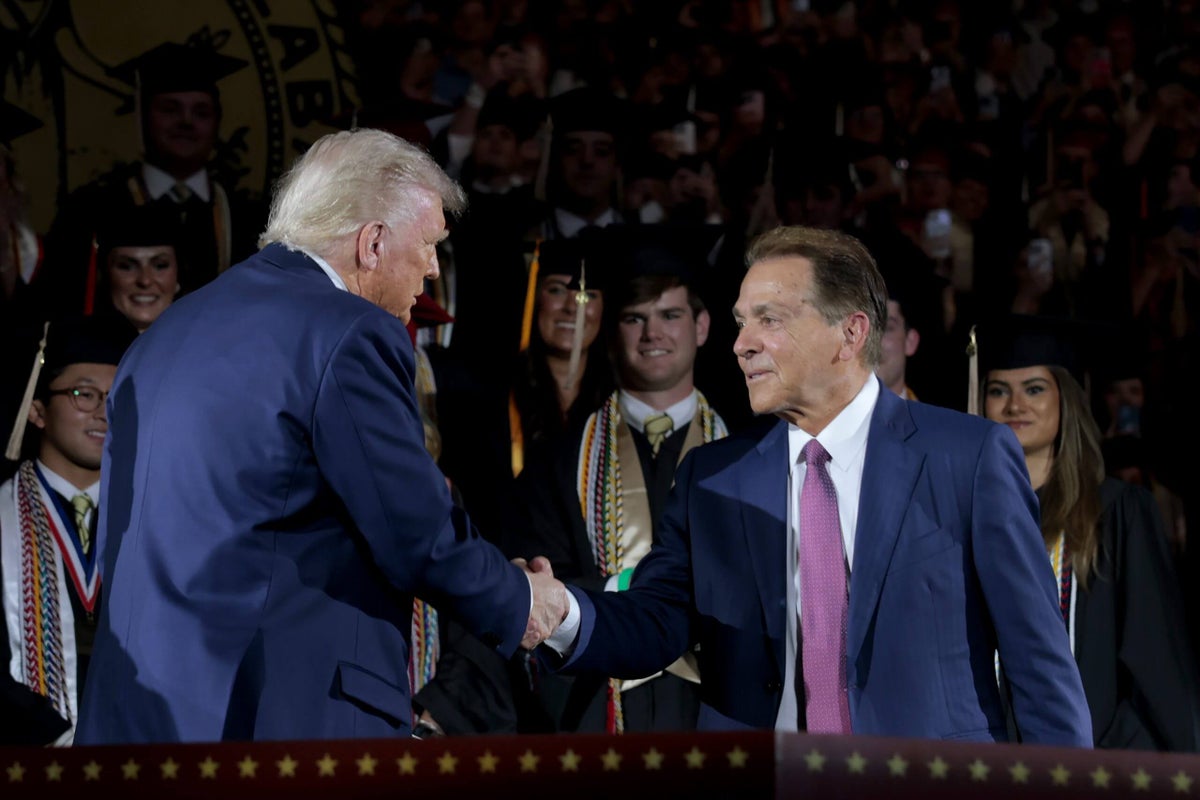
An attorney representing current and former college athletes in the proposed $2.8. billion House vs. NCAA settlement said a potential executive order from President Donald Trump on the issue of NIL in college sports would be “unmerited and unhelpful” and criticized former Alabama coach Nick Saban’s “eleventh-hour self importance,” due to his reported involvement in the discussions.
The Wall Street Journal reported late last week that Trump met with Saban while the president was in Tuscaloosa, Ala., to give the commencement speech at Alabama’s graduation ceremonies. The seven-time national championship coach warned that the compensation of athletes was creating an uneven playing field. The paper said that afterward, Trump instructed aides to begin studying what could be included in an executive order.
“While he was a coach, Saban initially opposed NIL payments to athletes, pushing to add restrictions and red tape through national legislation to add ‘some sort of control,’” attorney Steve Berman said. “During his time scrutinizing the athlete pay structure, he made tens of millions of dollars and was previously the highest-paid coach in college football.”
A federal judge in California is currently in the final stages of deciding whether to approve an expansive settlement in the House case that would establish a new system by which schools could directly pay up to $20.5 million a year for athletes’ NIL rights. Currently, all such deals must come from outside entities like collectives.
Judge Claudia Wilken told the parties on April 24 that she would not approve the settlement unless modifications were made to ensure current athletes do not lose spots on their teams due to the implementation of roster limits for each sport contained in the settlement.
The parties have until Thursday to respond.
No details have emerged about a potential executive order regarding NIL, which has become a catch-all abbreviation for a number of related issues in college sports, most notably the transfer portal.
“Coach Saban and Trump’s eleventh-hour talks of executive orders and other meddling are just more unneeded self-involvement,” Berman said. “College athletes are spearheading historic changes and benefitting massively from NIL deals. They don’t need this unmerited interference from a coach only seeking to protect the system that made him tens of millions.”
(Photo of President Trump and Nick Saban at the University of Alabama on Thursday: Moneymaker / Getty Images)
NIL
Anonymous ACC coach questions if Carson Beck is worth NIL money he received
Miami shelled out a lot of money to bring in transfer quarterback Carson Beck this offseason. Beck comes to Miami after five seasons at Georgia, including the past two as the starter, and has an NIL valuation of $4.3 million according to On3. But one anonymous ACC coach told Athlon Sports that they have questions […]
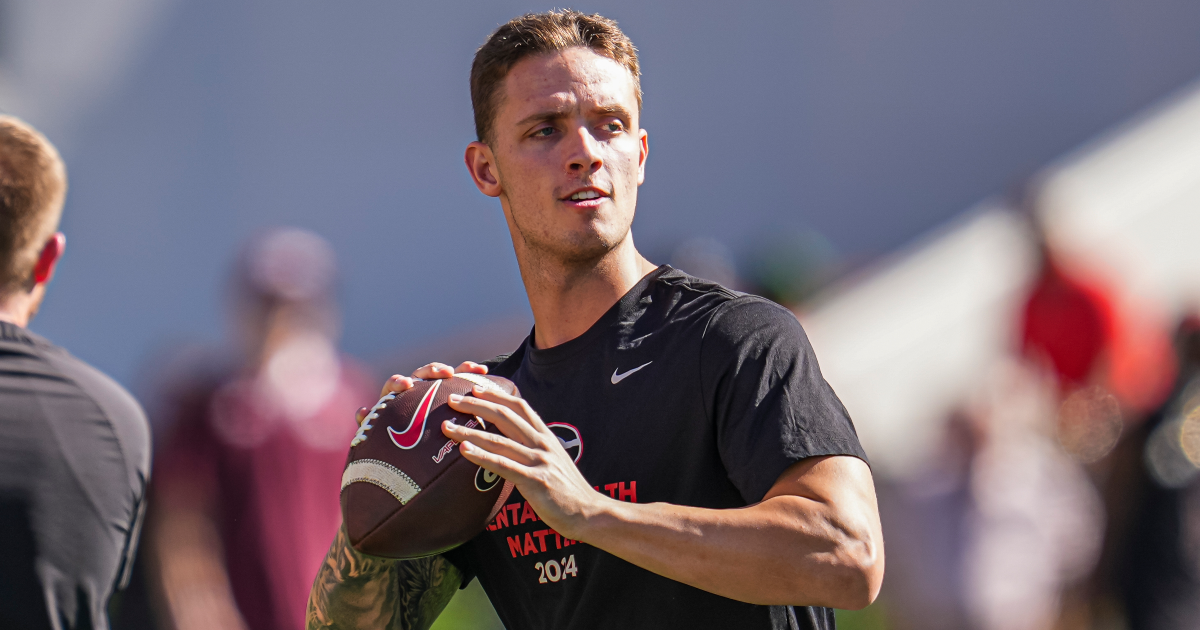
Miami shelled out a lot of money to bring in transfer quarterback Carson Beck this offseason. Beck comes to Miami after five seasons at Georgia, including the past two as the starter, and has an NIL valuation of $4.3 million according to On3.
But one anonymous ACC coach told Athlon Sports that they have questions on whether all that investment will pay off. Beck is expected to step in as starter after Cam Ward is gone to the NFL and the Hurricanes are banking on him to lead them to a College Football Playoff berth.
“Is [Carson] Beck worth all that money?” the coach wondered. “No one really knows right now, but that’s the question you have to ask.”
Beck ranked as the No. 1 overall player in the transfer portal this offseason according to the On3 Industry Ranking, a weighted average that utilizes all four major recruiting media companies. He helped the Bulldogs reach the SEC title game last season before suffering an injury in that game and missing their College Football Playoff quarterfinal, which they lost.
Beck put up solid numbers in his two seasons as a starter in Athens, throwing for 7,426 yards, 52 touchdowns and 18 interceptions in 27 games. He certainly has the experience to lead a team on a deep Playoff run, but has never started in a CFP game in his career.
Regardless, Miami is willing to take a shot on Carson Beck much like it did with Ward, who transferred in from Washington State last offseason. That worked out well as he helped the Hurricanes reach the ACC Championship and finished fourth in the Heisman Trophy voting.
But even then, Miami lost to Clemson in the conference championship and failed to make the College Football Playoff. Another anonymous coach who spoke with Athlon Sports noted a pattern for Miami in paying up for the top transfer players the past couple of seasons rather than focusing on team chemistry.
“I think there’s a bigger question here on how and why they spend what they do on the guys they pick,” the coach said. “It’s sort of like a Dodgers or Yankees mindset, spending on top-end recruits and portal guys, and not really a team-focused culture. You’re still in Florida, you still have to prioritize the high schools, and they’ve done that in NIL.”
Ultimately, we’ll have to wait and see whether Miami’s gamble with NIL money pays off this time around. In addition to Beck, the Hurricanes also signed former LSU receiver CJ Daniels, the No. 41 overall player in the portal.
NIL
Multiple people fill GM role for Kirby Smart. How others in SEC operate
MIRAMAR BEACH, Fla.—Georgia football lists nearly 70 people on its online staff directory ranging from high-profile coordinators to strength coaches to a performance chefs to recruiting staffers. One title that isn’t found is that of a general manager on coach Kirby Smart’s staff. That puts Georgia in the minority in the SEC where 12 SEC […]

MIRAMAR BEACH, Fla.—Georgia football lists nearly 70 people on its online staff directory ranging from high-profile coordinators to strength coaches to a performance chefs to recruiting staffers.
One title that isn’t found is that of a general manager on coach Kirby Smart’s staff.
That puts Georgia in the minority in the SEC where 12 SEC football programs list general managers, a growing position with sometimes nebulous responsibilities in the changing world of college athletics where top players can command seven figures in NIL and players come and go with the transfer portal.
“We have people that fill that role,” Smart said Tuesday May 27 at the SEC spring meetings. “It may be three, four people including myself, but we’re very clear in the roles of our staff members and what they do. They learn that throughout the recruiting process.”
Smart said recruits are introduced to people throughout the organization, but as far as a general manager what that role is seems to vary.
“If I ask every coach what their general manager does, they all do something different,” Smart said. “In the NFL, they do different than what they do at our level.”
General manager hires have made splashes in the last year, from former NFL quarterback Andrew Luck at Stanford to former NFL coach Ron Rivera at Cal to Senior Bowl executive director Jim Nagy at Oklahoma.
Some college football general managers have been in place for several years.
Barton Simmons, who was scouting director for the website 247Sports, was hired in 2021 to be general manager at Vanderbilt
Arkansas hired Remy Cofield this spring. He was director of scouting for the Boston Celtics, a franchise he worked for since 2013. Cofield is listed second on the school’s athletic staff directory behind athletic director Hunter Yurachek.
He works with football, men’s and women’s basketball and baseball. He was hired by Yurachek with input from coaches and has been on the job less than two months.
“I think it’s still a work in progress, to be totally honest with you,” Arkansas coach Sam Pittman told the Athens Banner-Herald. “Right now, he’s the communicator of the NIL. That would be the majority of his job right now. As it continues to work forward, I think he’ll have more to do with our current roster, our needs, who we’re recruiting. Right now, he’s the good or bad guy when it comes to NIL. He’s taken that off of me.”
Cofield is in communication with agents and recruits.
Alabama coach Kalen DeBoer brought general manager Courtney Morgan with him from Washington when he took the job after the 2023 season.
“There’s a lot of trust that I put on Courtney to have the authority not just with recruiting, the organization there, but also he’s involved what our big picture looks like when it comes to creative (video and graphics) and how that applies to recruiting,” DeBoer told the Athens Banner-Herald Tuesday.
Morgan also has a hand in roster management and works with a director of player personnel to “help me bring it all together,” DeBoer said. “I think maybe at other programs there isn’t as much involvement or maybe there’s other layers to it, hiring of certain staff members.”
Morgan also is involved in conversations with recruits on NIL figures.
“We try not to have anyone other than one specific person, you know with understanding what the numbers are going to be as we move into the rev share time,” DeBoer said. “Where that really starts is with the collectives and your people with the collective and talking those numbers. Courtney is pretty aware what those numbers are and understanding the questions that are coming to him and why those questions are being asked.”
Florida hired former Falcons director of football administration and director of football operations Nick Polk as its GM. North Carolina brought on former NFL executive Michael Lombardi for that role under Bill Belichick.
“We’ve got a lot of people in charge of roster management, including myself, including our football office staff,” Smart said before spring practices. “Our operations slash player development, player personnel staff, everybody gets involved in that. It’s a team effort. So, we reorganize and restructure some things in terms of what falls under whose duty and whose aspects. But at the end of the day, I’m not ready to run off and go hire somebody that’s just going to make all the decisions for what goes on the football field. I think I’ve got to stay involved in that heavily. We’ve got the capacity and the quality of people in the areas that I think we need.”
NIL
Infinix Levels up
India – May 28, 2025: Infinix India, a new-age smartphone brand, has partnered with True Rippers, one of India’s most prominent Battlegrounds Mobile India (BGMI) Esports teams. As part of this revolutionary move, the team will now compete under the ‘Infinix True Rippers’ banner – marking Infinix’s first-ever Esports team collaboration globally. The move reflects […]


India – May 28, 2025: Infinix India, a new-age smartphone brand, has partnered with True Rippers, one of India’s most prominent Battlegrounds Mobile India (BGMI) Esports teams. As part of this revolutionary move, the team will now compete under the ‘Infinix True Rippers’ banner – marking Infinix’s first-ever Esports team collaboration globally. The move reflects Infinix’s vision to support the rise of Esports in India and empower the next generation of Esports athletes.

This landmark deal reaffirms Infinix’s commitment to India’s gaming and Esports scene. Beyond its grassroots-level initiatives like the GT Powerplay Tournament, this collaboration aims to support the country’s top BGMI athletes while strengthening the brand’s connection with growing gamers.
The collaboration comes ahead of the launch of Infinix’s GT 30 Pro, an Esports-ready smartphone debuting on June 3. Tailored for high-performance gameplay, the GT 30 Pro offers 120 FPS support certified by BGMI Krafton and introduces dual gaming shoulder triggers—a segment-first feature aimed at competitive mobile gamers. This synergy between product innovation and strategic partnership reflects Infinix’s vision to support and empower the next generation of Esports talent.
Commenting on the partnership, Anish Kapoor, CEO at Infinix India said, “At Infinix, we’re not just witnessing the gaming revolution—we’re driving it. Teams like True Rippers are the driving force behind India’s growing Esports culture. Our collaboration is rooted in a shared belief—that gaming in India is more than just play; it’s a powerful aspiration for the youth. Today’s gamers aren’t just looking for entertainment; they’re driven by recognition, purpose, and identity. We’re proud to be among the first brands in the industry taking active steps to encourage aspiring esports athletes—empowering young gamers with products and initiatives that would be a testament to fulfilling our mission to support esports in India.
As we gear up for the launch of the GT 30 Pro, this collaboration signals more than just brand synergy—it’s about building a performance-driven ecosystem that inspires and empowers the next generation of gamers. In True Rippers, we’ve found a team whose competitive edge, creativity, and strong community presence align with our vision. Together, we’re setting the stage towards strengthening the Indian Esports ecosystem.”
Currently, Infinix True Rippers is competing in the prestigious BGMI Pro Series (BMPS) 2025 by Krafton, being one of the few elite teams in this invite-only competition. The tournament will culminate in a grand finale in New Delhi next month. The squad heads into the event in strong form, having secured a sixth-place finish at the BGMI India Series (BGIS) in Kolkata last month.
Aside from tournaments, the team will engage in ongoing co-creation with Infinix throughout the year, focusing on GT and other performance-driven smartphones.
Speaking about the partnership, Yashwanth AR, CEO at True Rippers said, “At True Rippers, we’re not just focused on building one of the best BGMI lineups in the country. We’re also committed to connecting with our young audience beyond the game through innovative content and meaningful engagement. We’re thrilled to partner with Infinix, a brand that shares our vision for trendy storytelling and performance excellence. This carefully curated collaboration is a step towards redefining how brand narratives can go beyond conventional naming rights deals.”
The Infinix True Rippers BGMI roster is comprised as follows:
- Gunjan Thakur aka Jelly
- Swaraj Singh aka KioLmao
- Ngurang Takar aka Ninzae
- Samuel Nabam aka SAM
India is one of the fastest-growing gaming markets globally, with over 454 million gamers in 2023, a number expected to exceed 730 million by 2028. According to Niko Partners, more than 65% of gamers either play, watch Esports, or compete in tournaments with BGMI playing a significant role in driving this engagement. Earlier this year, the BGIS 2025 recorded a peak concurrent viewership of 485,132 and amassed over 9.4 million watch hours, per Esports Charts data, showcasing the potential of the Infinix and True Rippers partnership in engaging with gamers directly.
With True Rippers’ in-game dominance and Infinix’s vision for empowering gamers beyond the screen, the Infinix True Rippers are set to become a powerful force at the intersection of technology, performance, and community-driven gaming culture.
Post Views: 68
NIL
Tate Level playing field a moving target
May 27—In competition, all anyone — you, me or our rival — should ask for is a level playing field. But football, the premier college sport, isn’t fair, and doubly so since 2021 when unregulated dollars were allowed to “buy” teams with fake name, image and likeness deals. Advertisement Illini coach Bret Bielema takes pride […]

May 27—In competition, all anyone — you, me or our rival — should ask for is a level playing field.
But football, the premier college sport, isn’t fair, and doubly so since 2021 when unregulated dollars were allowed to “buy” teams with fake name, image and likeness deals.
Advertisement
Illini coach Bret Bielema takes pride in Illinois’ 10-3 season in 2024 while pointing out that he was “working off a $5 million pool” of player salaries, while Big Ten champion Oregon, national champion Ohio State and several others were “north of $20 million.”
So, while Illinois is currently paying several times more than last year’s salaries, Bielema says traditional elites are outrunning the July 1 deadline on capped NIL payments by entering the $35 to $40 million category.
Whatever Illinois, Iowa, Indiana and their mid-level partners do, they are forever outspent. And if they have a special season, everyone understands that it can’t be sustained under the present rules.
Relief on the way?
Advertisement
Amazingly, we are simultaneously at an all-time competitive low with this insane avalanche of pay-for-play dollars pouring into the 2025 season and — hold your breath — perhaps only a year away from a setup that would establish long-overdue competitive balance.
How can that be? All-time unfairness in 2025! And just the reverse beginning in 2026?
Excuse me for hallucinating about the long-term future. Optimists in this business always hit unexpected snags. But, at least, college administrators are presenting a good idea for dissidents to shoot at.
Commissioners, administrators and leaders of the four major conferences — Big Ten, Big 12, SEC and ACC — have constructed a document that is circulating for acceptance. The document keeps football within the NCAA for academic and other reasons, but would transfer rules enforcement to a new College Sports Commission, and require strict adherence to market value of NIL payments over $600.
Advertisement
Stepping in to help?
With compensation off the NCAA plate, legal liability on NIL debates would fall to the new commission.
And here’s the kicker: Any school unwilling to sign the document faces possible expulsion.
All this assumes the House v. NCAA anti-trust case is finally settled.
Then, if by some miracle the circulated document is signed by all, it means football players would receive (1) a portion of each school’s $20.5 million allowable all-sports distributions and (2) any permitted NIL income, with anything over $600 being carefully scrutinized by a non-NCAA agency.
Why, you might ask, would Oregon and Georgia and Alabama and other dominant programs be willing to give up their monetary edge? Would they willingly engage in reforms that would limit their advantages and benefit the whole? The questions abound.
Advertisement
Shopping spree
Where does Tennessee stand? Just this month, the legislature there passed a law making it permissible for universities in that state to reject rules governing revenue sharing, and denying any punishment for inappropriate collective deals. They are determined to be, shall we say, above the rules, and others are certain to follow.
We are, as you might suspect, a long way from home on enforcement. And even more so with attorneys lined up with cases headed for the post-July 1 docket.
It seems to me that schools rejecting the document are announcing their desire to operate beyond the rules … and should be allowed to go their own independent way.
Bielema, growing as a spokesman in this massive disorder, said it best: “Whether we’re all shopping at Walmart or Louis Vuitton, as long as we’re all shopping in the same mall, I can live with that.”
NIL
Xavier, UConn NCAA Tournament Snubs Create Confusion For Mid
Image credit: UConn coach Jim Penders (Getty Images) All the emotions you’d expect came rushing in at once—disappointment, anger, heartbreak for players who may never get another shot at the NCAA Tournament. Confusion. Sadness. There’s no consolation prize for Billy O’Conner. If one exists, he doesn’t want it. Instead, the eighth-year Xavier coach is searching […]
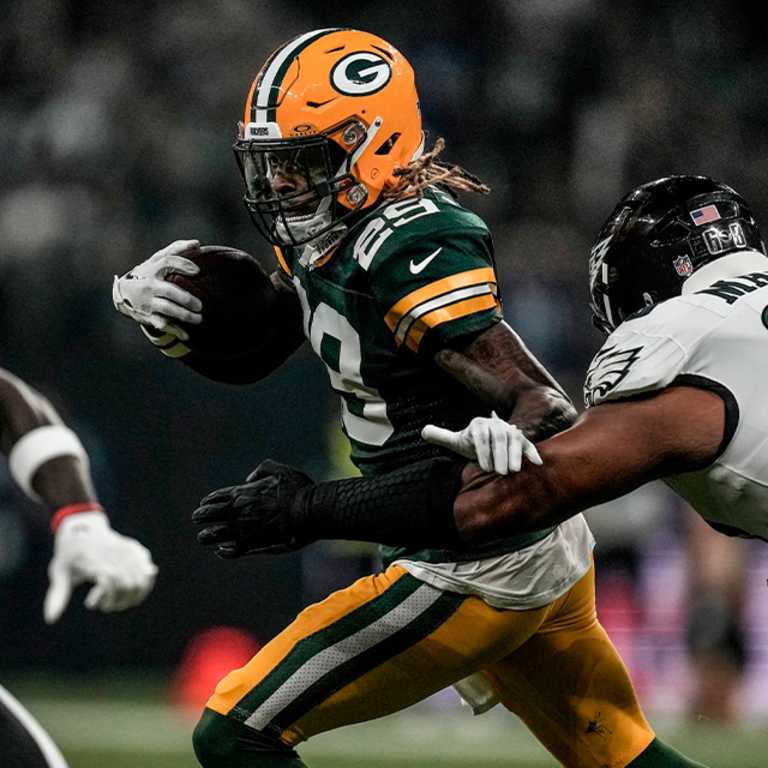
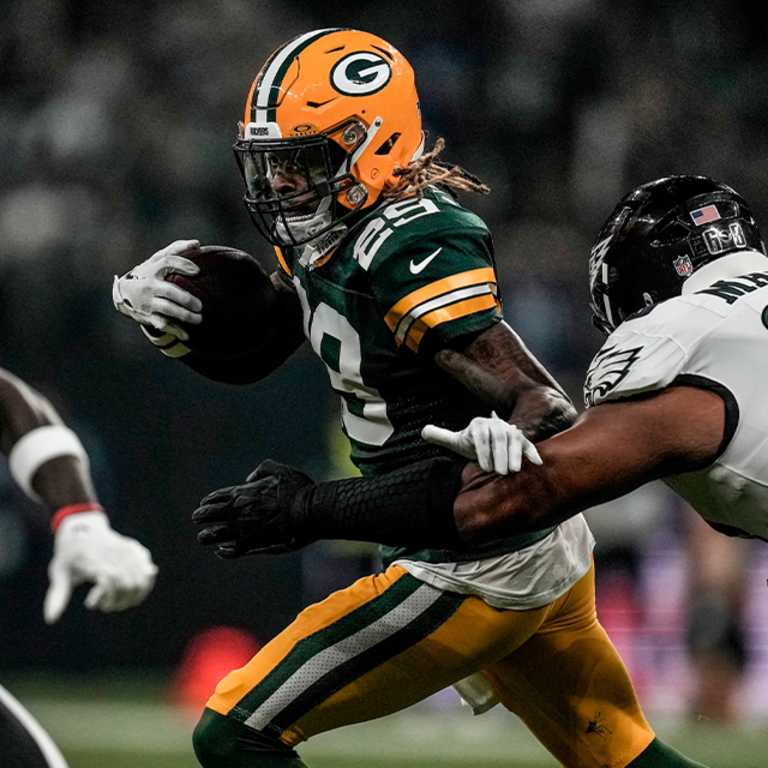

Image credit:
UConn coach Jim Penders (Getty Images)
All the emotions you’d expect came rushing in at once—disappointment, anger, heartbreak for players who may never get another shot at the NCAA Tournament. Confusion. Sadness.
There’s no consolation prize for Billy O’Conner. If one exists, he doesn’t want it.
Instead, the eighth-year Xavier coach is searching for answers from this year’s selection committee about what more his team could have done. The Musketeers produced the No. 33 overall strength of schedule, the No. 4 non-conference strength of schedule, and finished the season ranked No. 39 in RPI, the highest of any team left out of the field of 64.
O’Conner wants to understand the message not just from this year’s committee, but from the ones to come.
What more must his program, and mid-majors like it, do to avoid this kind of heartbreak again?
“Perfection is not attainable in this sport,” O’Conner told Baseball America just a few hours after the selection show. “So it’s like, I think that some of the frustration stems from like, ‘What is it?’ What goes into it? Because it feels like a moving target.”
The Musketeers had all the résumé markers typically associated with selection: 16 combined Quad I and II wins—more than Kentucky (12), which made the field comfortably, and Southeastern Louisiana (eight), which didn’t make the tournament but was still listed ahead of Xavier on the “First Four Out.” That inclusion was especially puzzling given Jay Artigues’ dual role as committee chair and Southeastern Louisiana’s athletic director.
Neither O’Conner nor UConn coach Jim Penders spent a second criticizing Southeastern or Kentucky or any other team that did or didn’t make it. Their argument wasn’t rooted in another program’s credentials. It was rooted in confusion over their own.
“Our season was not perfect this year, right?” O’Conner asked rhetorically. “We didn’t go 56-0. We didn’t win every game on our schedule. But I feel that we did what the committee has historically asked a program like ours to do to give themselves a chance to be in the mix for an at-large berth. And I think we did it fairly well.”
Penders echoed the sentiment.
“You look at the schedule that we play and we crisscross the country and try to build up the RPI as much as possible, knowing that we’re going to have some drags on it later on that are unavoidable,” Penders said. “I felt like we did all that we could do, and we were penalized.”
| Kentucky | Xavier | Connecticut | Southeastern Louisiana | |
| RPI | 38 | 39 | 41 | 54 |
| SOS | 8 | 33 | 80 | 130 |
| Non-con SOS | 191 | 4 | 48 | 251 |
| Q1 record | 8-19 | 5-12 | 7-11 | 0-3 |
| Q2 record | 4-1 | 11-12 | 5-4 | 8-3 |
| Q3 record | 7-3 | 5-2 | 9-6 | 18-8 |
| Q4 record | 10-1 | 11-1 | 17-0 | 11-2 |
Artigues, speaking on behalf of the committee, said Xavier and UConn were left out due to their conference schedules, which included just one Quadrant I series for Xavier and two for the Huskies.
“If you look at UConn, the Big East after the top three, it doesn’t have another team in the top 100 (of RPI), and that kind of hurts them,” Artigues said. “UConn started out 13-7, then they won 25 of the last 29, but only seven of those games were against top 100 RPI teams… and UConn was 3-6 against the top teams in that conference.
“There was a lot of talk about Xavier, and they challenged themselves, and non-conference strength of schedule is very important. But you do have to win those games, some of those games at least. If you look at Xavier, in one trip they played, I think it was Tennessee, LSU, Southeastern Louisiana and Vanderbilt. They went 0-6 and they got outscored nine to 63 or 68, so it was really lopsided, not even competitive in that. So if you (have) the non-conference strength of schedule, which is really important, you do have to win some of them.”
Ask O’Conner, Penders or Big East assistant commissioner James Greene, though, and they’ll all tell you that Artigues’ argument falls flat.
And they’re right to question the logic. The conference schedule is unavoidable—a fixed set of matchups dictated by league membership, not by choice. That’s precisely why both UConn and Xavier scheduled so aggressively outside the league.
They knew the Big East’s lower half would drag on their metrics come April. So they front-loaded their resumes with high-end opponents—SEC powers, ranked road trips, top-50 RPI matchups—to insulate themselves from the very argument the committee seemingly invoked to keep them out.
“I think it’s a little bit of a wake up call,” Greene said. “We all felt pretty good that had Creighton not wound up winning the tournament, and had Xavier or UConn done it, that Creighton would have been in that conversation. But based on the way the field came out, I’m not sure that would have been the case.”
That’s the part that stings: even doing things “the right way” wasn’t enough. Penders, in his 22nd season at UConn, built a schedule full of road gauntlets and resume-boosters from a one-off game against now-national No. 1-seed Vanderbilt (a contest the Huskies won) to a series against Miami. He just thought there’d be a reward for surviving it.
“Ultimately, I don’t want to just get into the tournament, I want to win a national championship,” Penders said. “So if I want to win a national championship, you kind of have to continue to schedule tough.”
O’Conner, whose team faced the fourth-hardest non-conference schedule in the nation by the metrics, also spoke to the value of intense match-making.
“My goal as a coach is I want to put the opportunities in front of our players,” O’Conner said. “We got to go win games. We got to go beat Vanderbilt. We got to go beat Stanford. We got to go beat LSU or Tennessee or Oregon State or whoever it is. But those opportunities are there.”
Now, though, O’Conner and Penders are left to wonder if that method is actually worth it. It’s hard to know what matters, they said without knowledge of each other’s comments. RPI? Strength of schedule? Quad-I wins? Head-to-heads?
Xavier and UConn posted better RPIs than three at-large teams (Oklahoma State, USC and Arizona State). Xavier’s overall strength of schedule exceeded those of 31 teams that made the field, including five of the 16 hosts. Connecticut’s 7-11 Q-I record was better than fellow bubble teams. Xavier actually beat Kentucky head-to-head.
“RPI matters until it doesn’t,” Greene said. “Where’s that line? From year to year, that line seems to switch or move.”
“It just felt like the committee was overlooking us,” he added. “That really sticks out to me.”
The Big East’s plight is one faced by every mid-major league in an increasingly top-heavy college baseball landscape that this year saw 30 of the 35 at-large bids go to teams from the SEC (12), ACC (eight), Big 12 (seven) and Big Ten (three). Independent Oregon State also locked up an at-large berth, leaving just four for mid-majors, including the Sun Belt, the fewest since the NCAA adopted the 64-team super regional format in 1999.
As such, it’s clearer than ever that programs like Xavier and UConn don’t have margin for error. And this year, the lesson they learned is even harsher: do everything right, and it still might not matter.
“If we are encouraging good teams to play good teams, that is great for the game of baseball,” O’Conner said. “If we are telling teams to just accumulate wins by any means necessary, that’s really bad for college baseball. That’s a bad product people are going to watch.”
Penders agreed, but highlighted the difficulties.
“Most of [the SEC teams] won’t play us,” he said. “They don’t want to play us and I don’t blame them. I mean, you don’t want to have a series loss to Connecticut on your resume. But what are we going to do? We got to keep marching on and try to find people that will play I think.”
That’s why this cuts so deeply. It’s not just about a tournament snub—it’s about how it feels to pour everything into the system and still walk away empty-handed and with far more questions than answers.
“There’s never going to be somebody that’s looking out for Xavier,” O’Conner said. “We’ve got to make it to a point where they can’t ignore us.”
Until then, he’ll keep scheduling the SEC powers. He’ll keep building the hardest possible non-conference gauntlets. He’ll keep believing that merit matters—even when the results suggest otherwise.
“We’re going to go down the same pathway again,” O’Conner said. “And we’ve got to get better. We’ve got to execute at a higher level. We’ve got to be ready for the challenges that are coming our way.”
Because there’s no other option. Not for Xavier, UConn or the rest of the mid-majors trying to do it the hard way and still hoping that it will be enough.
“It’s very difficult to look your guys in the eye and say, ‘We’re going to run through that brick wall, and then we’re going to do it again and again and again, and I promise you it’s going to work out,’” Penders said. “And then days like today make me feel a little bit like a liar.”
NIL
Texas A&M Coach Frustrated With Lack of Clarity in Upcoming NCAA Settlement
The impending House vs. NCAA settlement approval is expected to shake up NIL and college football in some significant ways. Everything from NIL salary caps to roster limits will be implemented in some fashion or another starting on July 1. While many view this new framework in a largely positive light, some have voiced concerns […]
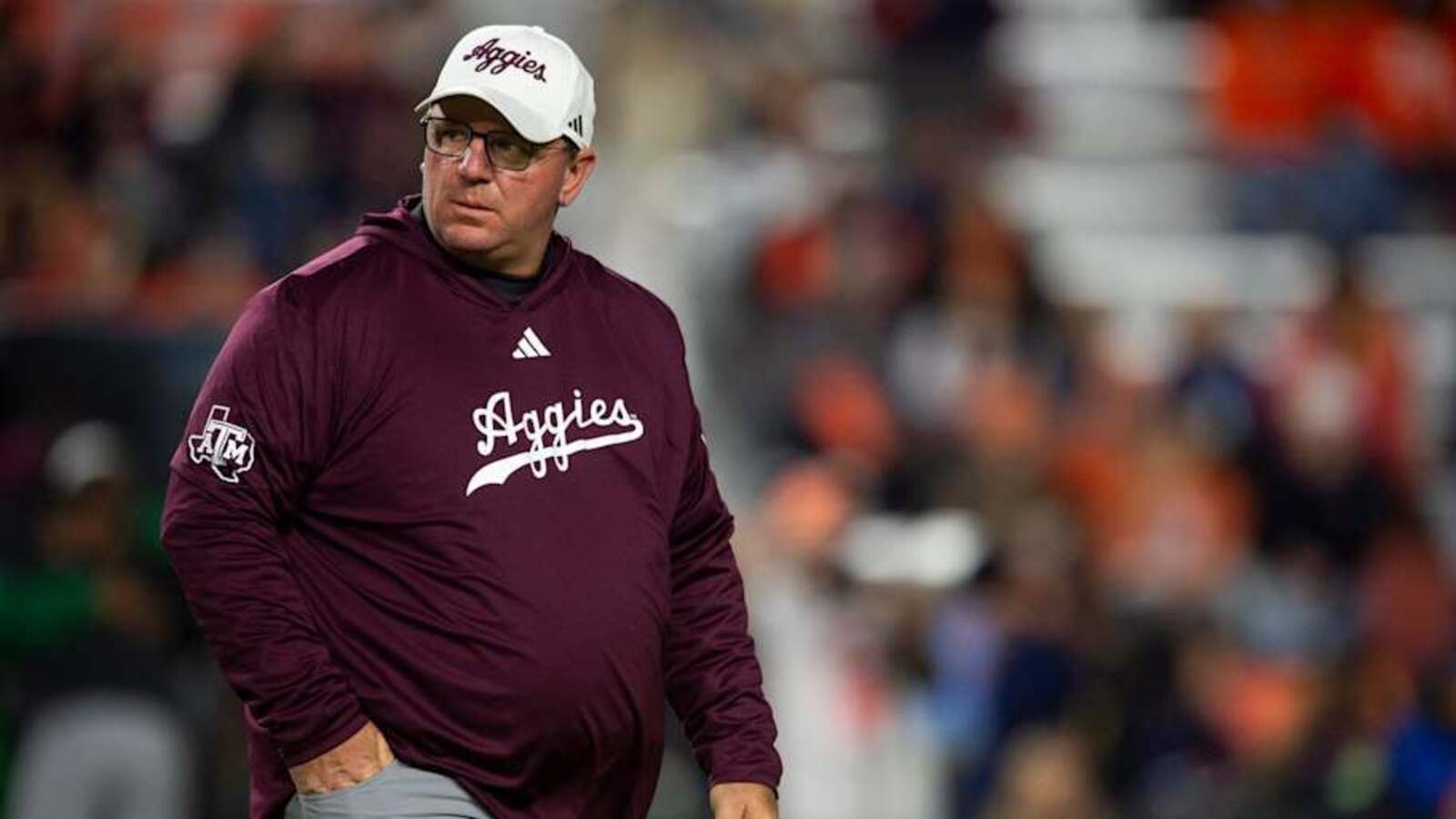
The impending House vs. NCAA settlement approval is expected to shake up NIL and college football in some significant ways. Everything from NIL salary caps to roster limits will be implemented in some fashion or another starting on July 1.
While many view this new framework in a largely positive light, some have voiced concerns over the expedited nature of the implementation and how the rules are, in essence, being switched around on programs in the middle of the offseason.
One prominent figure who falls into this category is Texas A&M Aggies head coach Mike Elko, who recently discussed his frustrations with the uncertainty surrounding the settlement implementation at the annual SEC spring meetings.
According to Outkick’s Trey Wallace, Elko’s frustrations primarily centered on the proposed $20.5 million revenue-sharing cap.
He compared it to the NFL model, noting that they would never suddenly decide to change their cap rules in the middle of the offseason.
“I couldn’t imagine an NFL team getting halfway through the offseason and deciding to change their salary cap rules,” Elko said. “That’s what I guess we’re doing.”
Elko’s frustrations aren’t entirely without merit, as nobody truly knows just how much these new regulations will change the college football landscape until they are actually put into place.
The salary cap is just one of many groundbreaking changes that could be implemented.
The new rule is set to allow athletic departments to pay their student-athletes directly, with a cap of $20.5 million to be split among each sport. Athletes will still be allowed to receive outside NIL endorsements, but these will now require approval from an independent clearing house.
Roster limits are also expected to be added to the sport, with each school allowed to have up to 105 athletes on their football roster each season, which is 20 more than the 85 scholarship limit the NCAA had been allowing up to this point.
It’s clear that this new era of NIL is going to cause far more confusion than answers at the outset, but it’s something Elko and every other coach will have to deal with.
More NIL News
-

 High School Sports3 weeks ago
High School Sports3 weeks agoWeb exclusive
-

 Sports3 weeks ago
Sports3 weeks agoPrinceton University
-

 Sports3 weeks ago
Sports3 weeks ago2025 NCAA softball bracket: Women’s College World Series scores, schedule
-
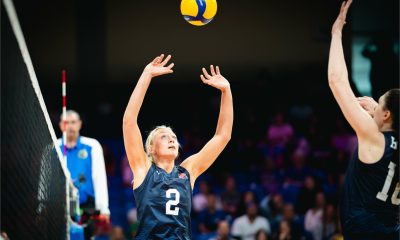
 Sports3 weeks ago
Sports3 weeks agoUSA Volleyball Announces 2025 Women’s VNL Roster
-

 Rec Sports3 weeks ago
Rec Sports3 weeks agoMontgomery County Honors First “Unsung Sports Heroes”
-
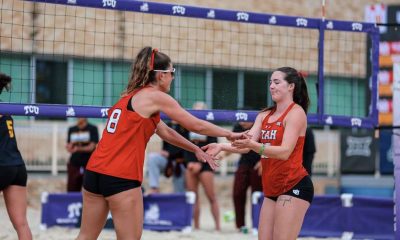
 Sports3 weeks ago
Sports3 weeks agoA fight to save beach volleyball and Utah athletics’ ‘disheartening’ answer
-

 Rec Sports2 weeks ago
Rec Sports2 weeks agoThe Program, a New Basketball Training Facility, Opening in Greenpoint This September
-

 College Sports1 week ago
College Sports1 week agoPortal Update – Basketball and Gymnastics Take Hits
-
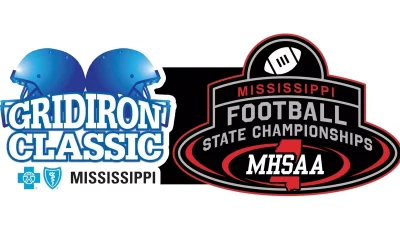
 High School Sports3 weeks ago
High School Sports3 weeks agoToday in the MHSAA
-

 College Sports3 weeks ago
College Sports3 weeks agoNew restaurant to open in State College | Lifestyle
































